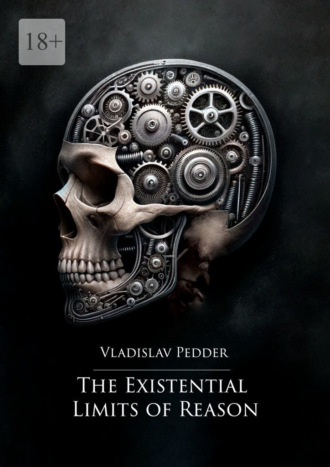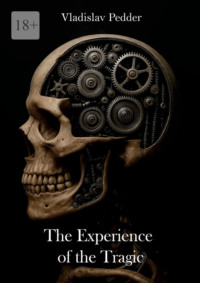
Полная версия
The Existential Limits of Reason
Влияние окружения и воспитания
Окружение и воспитание также играют значительную роль в формировании нашего поведения. Сапольски акцентирует внимание на том, как стрессовые события могут сильно повлиять на принятие решений. В частности, стресс может снизить нашу способность к рациональному мышлению, делая нас более склонными к импульсивным решениям. Это также подтверждает, что наши действия во многом предопределены внешними обстоятельствами, а не свободной волей.
“Когда мы находимся под стрессом, наш мозг начинает работать иначе, что делает нас более склонными к агрессии или импульсивным поступкам. Это означает, что даже в моменты напряжения наши действия детерминированы” (Determined: A Science of Life Without Free Will, p. 140).
The Role of Neuropeptides and Hormones in Behavior
Sapolsky provides an in-depth discussion on how hormones, such as oxytocin, can significantly influence our social interactions. He presents examples illustrating how an increase in oxytocin levels can make individuals more trusting and altruistic, whereas a decrease can lead to aggression and distrust.
“Hormones such as oxytocin play a crucial role in our behavior. We cannot control their levels, and it is often these biochemical factors that determine how we relate to others” (Determined: A Science of Life Without Free Will, p. 165).
Decoherence and Classical Reality
Quantum decoherence refers to the loss of quantum coherence. It has been studied to understand how quantum systems transition into states that can be described using classical mechanics4. This theory, which emerged as an attempt to extend the understanding of quantum mechanics, has evolved in several directions, with experimental research confirming some key aspects.
At the macroscopic level, quantum effects become “blurred” due to the interaction of quantum systems with the surrounding environment. This process, known as decoherence, explains why the macroscopic world appears strictly deterministic.
Decoherence demonstrates that quantum systems transition into states that, from the observer’s perspective, appear classically determined. Thus, quantum uncertainty does not “penetrate” the macroscopic world, where Newtonian laws prevail.
Bell’s Experiment
Bell’s experiment demonstrates that quantum mechanics violates Bell’s inequalities, indicating the presence of quantum nonlocality. This phenomenon is often interpreted as a challenge to classical notions of determinism. However, Sapolsky emphasizes that even quantum nonlocality does not provide “free will”, as the outcomes remain entirely dependent on the system’s parameters and its initial state.
According to Sapolsky, misinterpretations of quantum nonlocality arise from the assumption that the randomness of quantum events allows for the existence of a will independent of deterministic factors. However, as he points out, quantum randomness does not make events free; it merely makes them unpredictable.
Physical Determinism and System Complexity
The ideas of Pierre-Simon Laplace, suggesting that knowledge of all initial conditions can allow the prediction of the future, are discussed in the context of chaos theory and quantum uncertainty. Sapolsky points out that even in a complex physical system (such as the brain), no “freedom” arises; everything remains predetermined by the laws of physics. Despite potential quantum uncertainty, its impact on the level of conscious decisions is minimal and does nothing to save the concept of free will.
According to Laplace’s theory, Laplace’s demon is a hypothetical entity that, knowing the position and velocity of all particles in the universe at a specific moment in time, can accurately predict the future. If you understand the physical laws governing the universe and know the exact position of every particle within it, you can predict with precision what happened at every moment since the beginning of time and what will happen at every subsequent moment until the end of time. This means that everything that happens in the universe was destined to happen (in a mathematical, not theological, sense).
Конец ознакомительного фрагмента.
Текст предоставлен ООО «Литрес».
Прочитайте эту книгу целиком, купив полную легальную версию на Литрес.
Безопасно оплатить книгу можно банковской картой Visa, MasterCard, Maestro, со счета мобильного телефона, с платежного терминала, в салоне МТС или Связной, через PayPal, WebMoney, Яндекс.Деньги, QIWI Кошелек, бонусными картами или другим удобным Вам способом.
Примечания
1
For more detailed information on Active Inference and the Free Energy Principle, you can refer to the book by Thomas Parr, Giovanni Pezzullo, and Karl J. Friston, “Active Inference: The Free Energy Principle in Mind, Brain, and Behavior” (2022). This book provides an in-depth exploration of these concepts, explaining how they integrate with cognitive processes, brain functions, and behavior. It offers a comprehensive understanding of how the brain uses prediction, error correction, and active inference to adapt to environmental changes and minimize uncertainty.
2
The Signal and the Noise: Why So Many Predictions Fail-but Some Don’t (2012)
3
The quotes in the book are taken from Russian translations and may differ slightly from the originals. This is due to the fact that I did not have the original texts at hand while writing this book.
4
Coherence in physics refers to the correlation (consistency) of multiple oscillatory or wave processes over time, which manifests when they interfere. Oscillations are considered coherent if the phase difference between them remains constant over time, resulting in a combined oscillation of the same frequency. A classical example of two coherent oscillations is two sinusoidal waves of identical frequency. From the perspective of quantum theory, decoherence represents the collapse of the wave function due to interaction with the environment. The process of decoherence is a crucial component of the thought experiment proposed by Erwin Schrödinger, in which he sought to demonstrate the incompleteness of quantum mechanics in describing the transition from subatomic systems to macroscopic ones.




